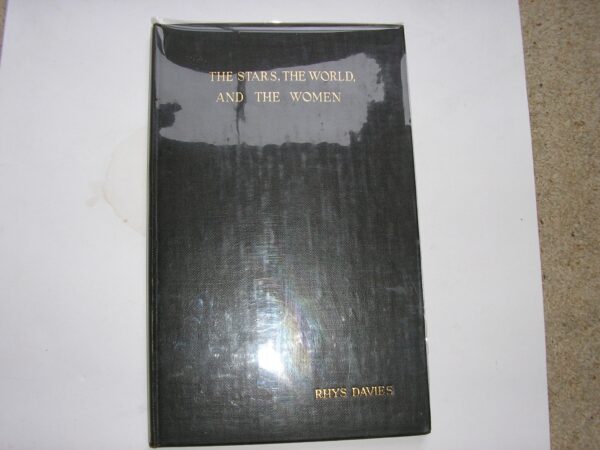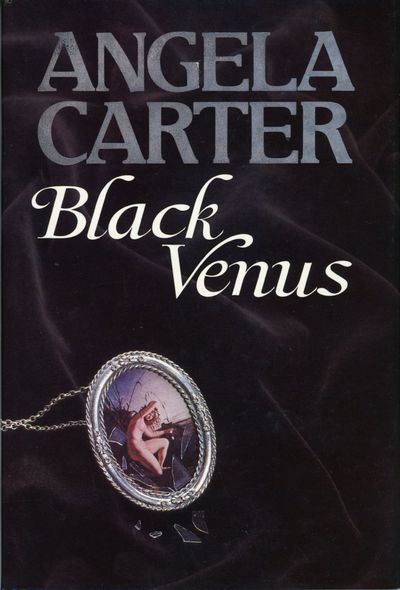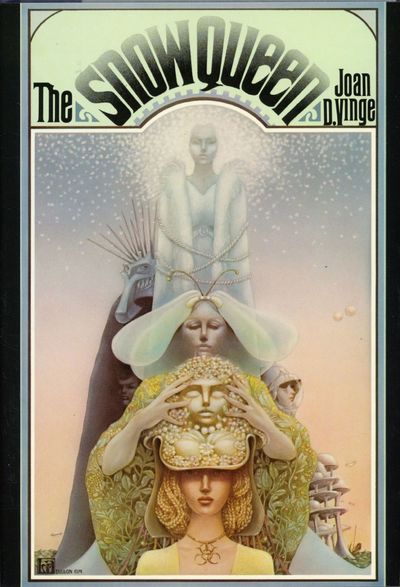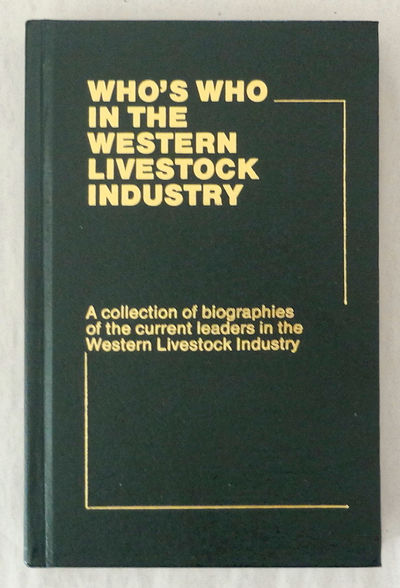
The Unser Legacy
Kirby, Gordon Minneapolis, 2005 Signed by Al Unser and Al Unser Jr. on the title page. Hard cover. 10 1/4" square. 256pp. Profusely illustrated with b/w and color photographs. Fine in a near fine dust jacket. The story of the Unser family of Colorado Springs. The most successful motor racing family in America with numerous wins at Pikes Peak and the Indy 500.- $200
- $200
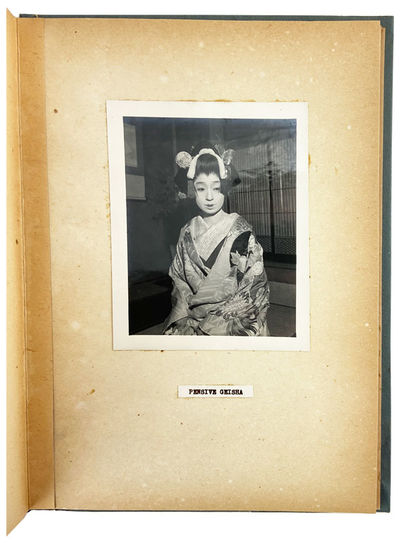
Afternoon With a Geisha
[DRAMA & FILM - ODORI] AZUMA HARUE [a.k.a. Azuma Tokuho] N.p., 1954 N.p., 1954. Small quarto (26cm.); hand-made volume of black paper-covered boards, original photographic element mounted to upper cover; [18]ll. to which are mounted seventeen (17) original black and white photographs captioned with photo-reproduced text from typescript. Boards slightly worn with brief chipping of paper to upper cover and at spine ends, textblock uniformly toned due to inferior paper quality, one photograph separated but present. Overall Very Good. Possibly unique photo-essay depicting the preparation for and performance by Japanese dancer Azuma Harue (1909-1998). The daughter of fellow-performers Ichimura Uzaemon and Masaya Fujima, by 1942 Azuma had succeeded her father as a second-generation Soke (Grand Master) of "kabuki" dance, despite the field's exclusion of women performers. This album presumably compiled by an Western journalist or audience-member, possibly dating from the Azuma Company's 1954 tour of the United States. The text opens with a brief introduction of the performer, who began "at the age of six to study the dance of the body, feet, arms and hands...These pictures show Harue Azuma making up and dressing with the aid of her maid prior to posing in various forms of the odori." The opening photograph's caption reveals the nature of the album's compiler. In the image Azuma is applying a layer of white make up to her face, which the text describes as "Dead white on yellow - the makeup begins." The following seven images show Azuma preparing her hair for her headress and wig with the aid of her servant, applying "lotus petal lipstick," and painting her finger nails. The remaining ten photographs show Azuma on an empty stage before a drawn curtain in various poses, including "Mood of the Ocean Waves," "Fanfare Frieze," "Fanciful Flutter," "Sudden Summer Shower," and finally "Nipponese Salome." A wonderful portrait of one of the greatest performers of Japanese dance of her generation.- $450
- $450
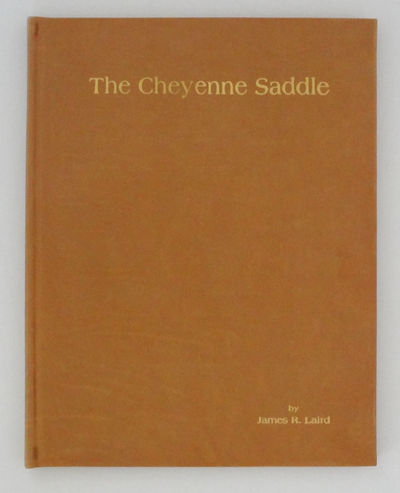
The Cheyenne Saddle
Laird, James R. Cheyenne, WY, 1982 Number 73 of a limited edition of 200 books bound in genuine saddle leather and inserted in a fitted slip case. Signed and dated by author on the limitation page. Hard cover. Quarto. [ix] 1, 55pp. Some fading to spine otherwise near fine in a fine slip case. Profusely illustrated.- $175
- $175
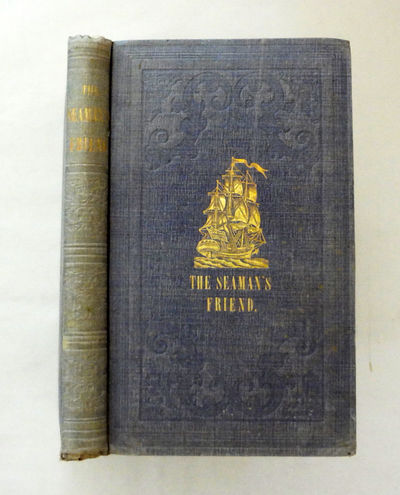
The Seaman’s Friend
Dana, R.H. Jr. Boston, 1851 Hard cover. Octavo. Blue cloth over boards. Both covers blind stamped and with a gilt sailing ship and title to the front. [viii] 9-225pp with 5 plates plus two pages of publisher's advertisements. Gift inscription from grandfather to grandson on front free end paper. Boston bookseller's label to rear fixed end paper. First and last pages and all page edges foxed, all other pages and plates bright. Cover shows fading, more so to spine.- $200
- $200
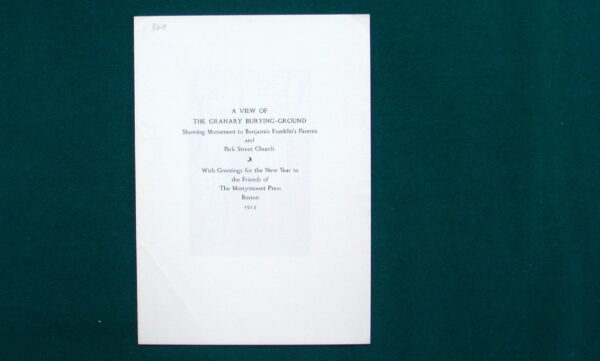
10 Merrymount Press Keepsakes illustrated by Rudolph Ruzicka.
THE MERRYMOUNT PRESS "Ruzika (Rudolph), notably in the series of annual Keepsakes done for the Press since 1912, has created some of America's most distinguished wood engravings in color" (The Work Of The Merrymount Press an exhibition prepared by Greg Anderson for The Huntington Library, 1942). The following Keepsakes are included: 1923, A VIEW OF THE GRANARY BURYING-GROUND; 1924, A VIEW OF UNIVERSITY HALL HARVARD UNIVERSITY, CAMBRIDGE; 1926, A VIEW OF THE HOUSE OF THE SEVEN GABLES SALEM, MASSACHUSETTS; 1930, A VIEW OF THE QUINCY HOMESTEAD QUINCY, MASSACHUSETT; 1931, A VIEW OF SOME OLD GARDENS BEACON HILL, BOSTON; 1933, A VIEW OF FORT INDEPENDENCE ON CASTLE ISLAND, BOSTON HARBOR; 1934, THE WASHINGTON MONUMENT IN THE PUBLIC GARDEN BOSTON; 1936, CHRIST CHURCH, SALEM STREET, BOSTON LOOKING WEST FROM "THE PARADO"; 1937, SAINT STEPHENS CHURCH ON HANOVER STREET, BOSTON LOOKING EAST FROM "THE PRADO"; 1938, WORCESTER SQUARE LOOKING TOWARD THE CITY HOSPITAL, BOSTON; 1940, A VIEW OF THE SUMMER HOUSE. A fine set with light handling marks.- $449
- $449
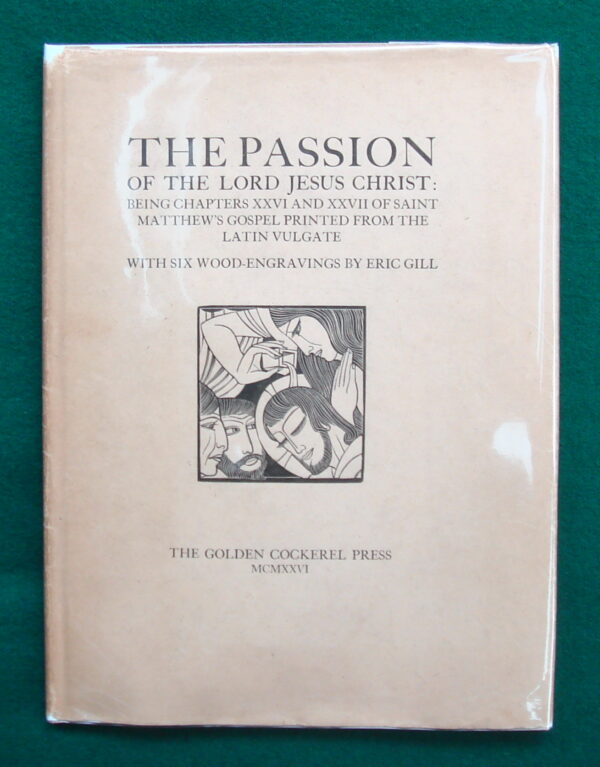
Passio Domini Nostri Jesu Christi.
GILL, ERIC Being the 26th and 27th Chapters of "Saint Matthew's Gospel", from the Latin text. Number 57 of 250 copies set in 18 pt. Caslon Old Face type and printed in black and red on Batchelor hand-made paper. 10.5 X 7.5 ins. 15 pp. Full bound in white buckram with gilt spine title. Initial letters and 6 wood engravings by Eric Gill. "The "Passio" is an exquisite little book; clearly related to the sculptures of The Stations of the Cross which Gill had cut for Westminster Cathedral - and when his engravings were devotional in intent what a superb illustrator Gill could be. ("A History of the Golden Cockerel Press 1920-1960) A fine copy in dust-jacket which is very slightly chipped and lightly soiled.- $2,153
- $2,153

An Alphabet (LARGE LIBRARY EDITION)
NICHOLSON, WILLIAM The scarce and desirable large Library Edition. Title and 26 three colour lithographs printed on hand-made wove paper and tipped-in on brown paper leaves. First published in 1897 title page dated 1898. Folio. 15.75 x 12.5 ins. Full pictorial cloth with title in black on spine and upper cover. All edges gilt. William Nicholson's most famous graphic work priced at 12s - 6d on publication. The artist's ironic sense of wit and fondness for puns in evidence with "A for artist" a self-portrait but as a pavement artist rather than a fine artist. And "B for Beggar" being a portrait of Nicholson's brother-in-law, James Pryde, his partner in J. and W. Beggarstaff. Together, the Begarstaff brothers designed posters and other graphic work which captured the attention of the art world. "An Alphabet" is the first of the five portrait/picture books that Heinemann published with Nicholson lithographs. The artist was paid £5 for each image with six shillings additional for hand-colouring. Nicholson claimed he could turn out 40 a day. Better than a very good + copy with slight soiling to covers and light scattered foxing to the brown leaves. The plates uneffected.- $3,946
- $3,946
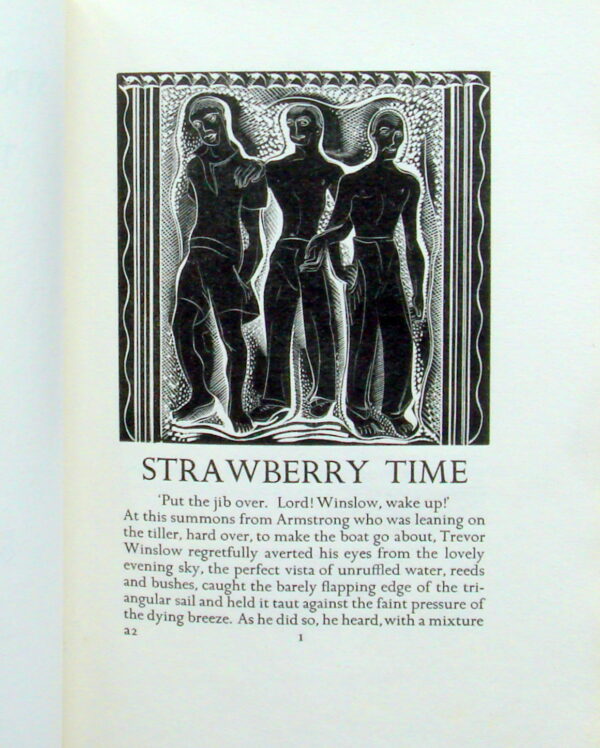
Strawberry Tine and The Banquet.
HERMES, GERTRUDE By R.H. Mottram. Number 55 of 250 copies signed by the author. Set in 14 pt. Golden Cockerel type and printed on Batchelor paper. 9.5 X 6 ins. 89 pp. Quarter green morocco with special GCP pattern cloth covered boards. T.E.G. with gilt spine titling. 4 wood engravings by Gertrude Hermes. Exterior near fine. Interior fine.- $269
- $269
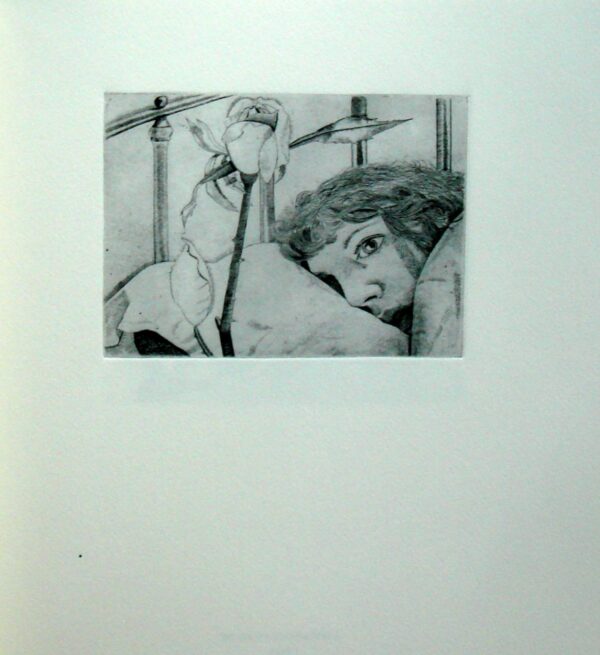
LUCIAN FREUD the complete etchings 1946-1991.
FREUD, LUCIAN Exhibition catalogue for Lucian Freud at Thomas Gibson Fine Art June 4 - July 12, 1991. Text by Craig Hartley. 12 x 10.75 ins. Photographic soft cover with title on glassine wrapper. 38 gravure illustrations. An extremely handsome catalogue in its original cardboard box. Fine copy.- $149
- $149
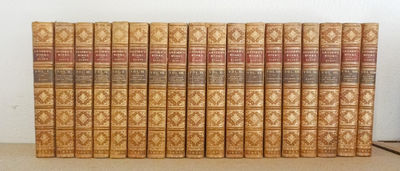
The WORKS of JOHN DRYDEN
Dryden, John Edinburgh, 1821 Complete in eighteen volumes. Octavo. Tan calf over boards with double gilt ruled covers. Ornate gilt tooled spines with five raised bands and two contrasting labels. Marbled end papers and page edges. Volume I with portrait frontispiece of Dryden engraved by W.H. Lizars. Volume VI includes a fold out plate "The Solemn Mock Procession of the POPE Cardinals, Jesuits, Friars Etc. Through the CITY OF LONDON November 17th 1679." with a half width separation along one of the folds. Each volume with the bookplate of Florence de Wolfe Sampson by E.D. French, who also engraved the Grolier Club's own bookplate as well as bookplates for many of its members. Some foxing to frontispiece and title page, Vol I, otherwise very good. John Dryden (1631-1700) was an English poet, literary critic, translator, and playwright who was appointed England's first Poet Laureate in 1668. He is seen as dominating the literary life of Restoration England to such a point that the period came to be known in literary circles as the Age of Dryden. - wikipedia. There may be additional shipping costs for this large set.- $900
- $900
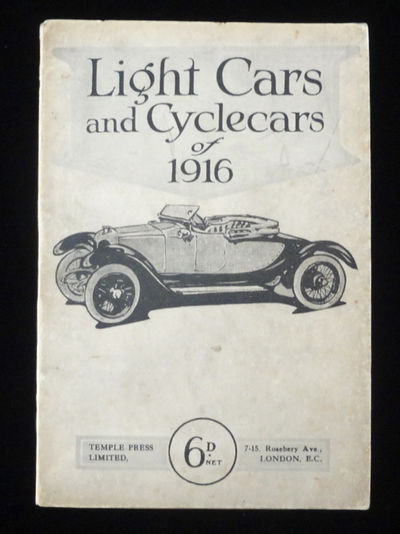
Light Cars and Cyclecars of 1916
Staff London, 1916 Soft cover Small octavo. [viii] 64pp. Cream colored covers with lettering and sports car image in black to front. One car illustration and specifications per page for a total of 61 different models. Light tanning to pages with some wear to covers. Very good.- $100
- $100
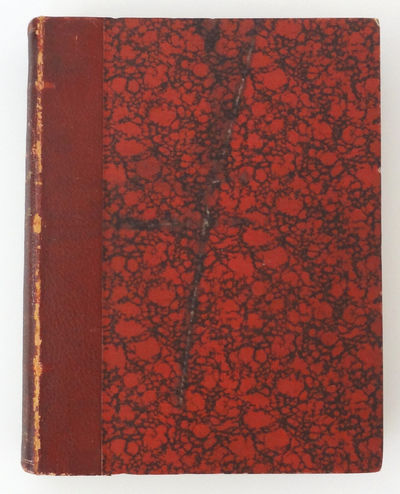
Index Librorum Prohibitorum
Fraxi, Pisanus (pseudonym Ashbee, Henry Spencer) London, 1877 Quarter leather over red marbled boards. 4to. [lxxvi] 542pp [2]. Top edge gilt, others untrimmed. Title in gilt to spine. Text in black and red. All edges rubbed with an old near vertical scratch to front cover. Front free end paper and first blank leaf loose. Henry Spencer Ashbee was a book collector, writer, and bibliographer. He is notable for his massive, clandestine three-volume bibliography of erotic literature published under the pseudonym of Pisanus Fraxi. The title of the work is Index Librorum Prohibitorum: being Notes Bio-Biblio-Icono-graphical and Critical, on Curious and Uncommon Books. It has an engraved frontispiece and reproduces by photolithography occasional facsimile pages from works which it discusses in its text. Its author listed himself on the title page as Pisanus Fraxi. The Index Librorum Prohibitorum–the title of course is humorously annexed from the Roman Catholic organ of censorship–is the first bibliography in the English language devoted to writings of a pornographic or sexual character. But the Index is itself the first part of a work, for in 1879 there followed a second, companion volume, Centuria Librorum Absconditorum, and in 1885 Pisanus Fraxi completed his project with a third volume, entitled, Catena Librorum Tacendorum. Pisanus Fraxi was the pseudonym of Henry Spencer Ashbee. Ashbee distinguishes himself from most previous bibliographers by virtue of the attention he gives to the contents of the books he examined. - Steven Marcus, The Other Victorians.- $300
- $300
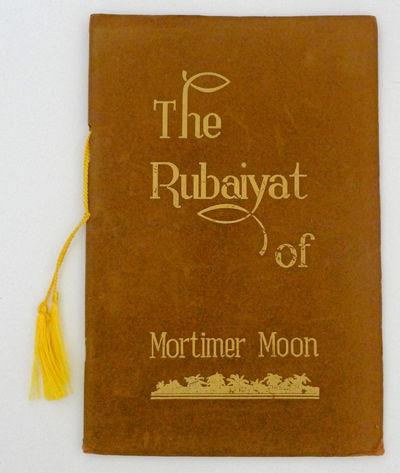
The Rubaiyat of Mortimer Moon
Moon, Mortimer No publisher or place of publication noted. Undated but likely 1890 to 1915. Octavo. Unpaginated but sixteen leaves staple bound in tan wraps and cord tied into a limp brown suede cover with gold title and decoration. 89 verses with duotone illustrations by Lloyd Williams throughout. Very good condition with slight rub to bottom corner of front cover. A one page preface gives a synopsis of the life and work of Omar Khayyam in which the author ends by writing that his own verses are "... at best, pale caricatures which brazenly dare to stand in the shadow of Omar's structure, their only claim for consideration being that they reflect perhaps a somewhat more cheerful and optimistic philosophy and faith." None located in OCLC.- $125
- $125
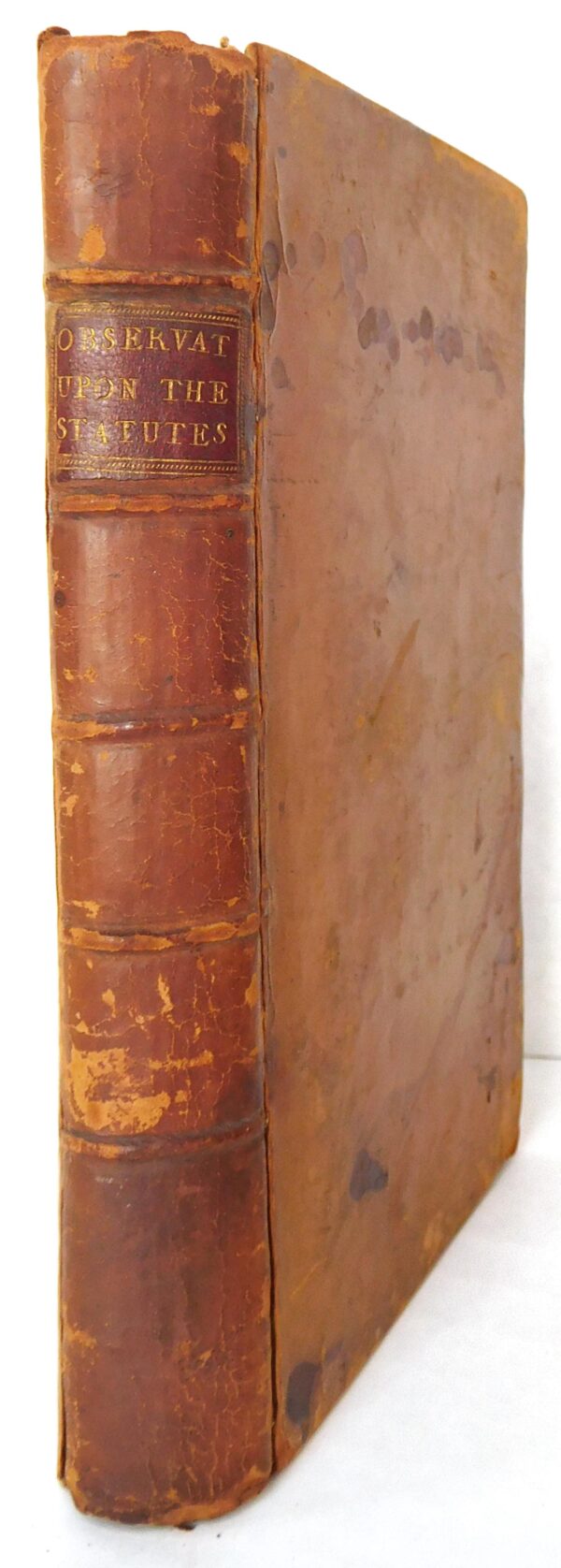
Observations on the Statutes, Chiefly the More Ancient, From Magna Charta to The Twenty-first of James the First, Ch. xxvii, With an Appendix, Being A Proposal for new modelling the Statutes. Second Edition, With Corrections and Additions
Barrington Daines Contemporary calf, quite rubbed and with some ink stains mainly on the front board, joints cracking but holding, else quite clean and usable The sole Irish edition of one of the foremost works of eighteenth century English law reform, serving as a bridge between Bacon and Blackstone and viewed with admiration by both Dr. Johnson and Jeremy Bentham, who termed it a "great treasure"- $563
- $563
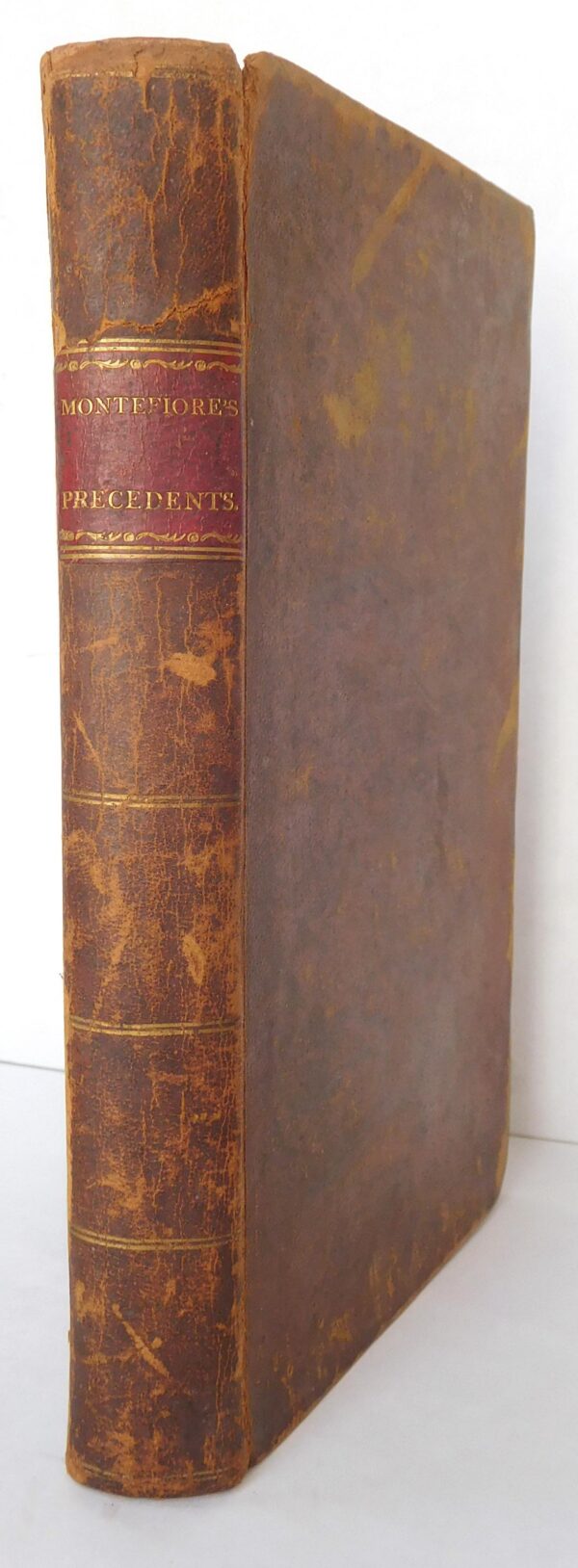
Commercial and Notarial Precedents: Consisting of All the most approved Forms, Common and Special, which are required in Transactions of Business [etc.] [with the advertising leaf not noted by Cohen] Cohen 2431
Montefiore Joshua Original tree sheep, quite rubbed but very sound, ownership stamps, with the bookplate of W.H. Shir-Cliff depicting two maidens reading to one another First American edition of the first law book written by a Jewish author to be printed in this country, Montefiore subsequently to immigrate to the United States; with a substantial appendix devoted to bills of exchange, insurance, and shipping- $1,688
- $1,688
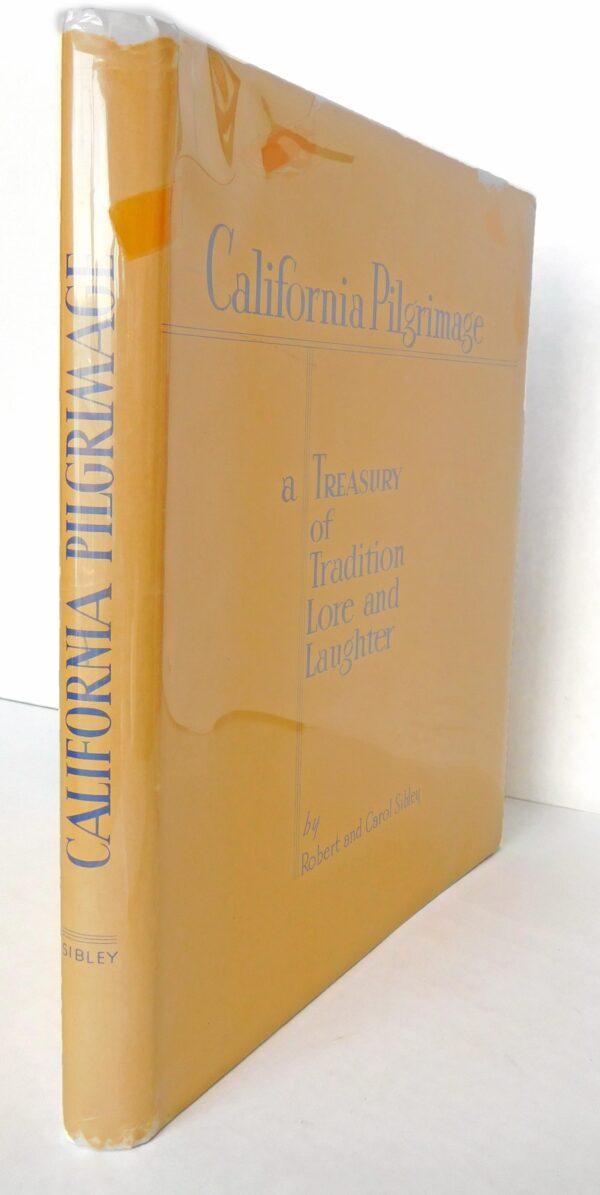
University of California Pilgrimage, A Treasury of Tradition, Lore and Laughter
Sibley Robert and Carol Original oversized cloth, a very good copy in a somewhat chipped dustjacket, with four brief remains of tape marks on its upper portion Earl Warren's copy, presented to him and Nina Warren by Robert Sibley, with a warm, personal ten line inscription, in ink, on the half title, the work including a chapter on Berkeley's law school, Boalt Hall, from which Warren graduated in 1912- $563
- $563
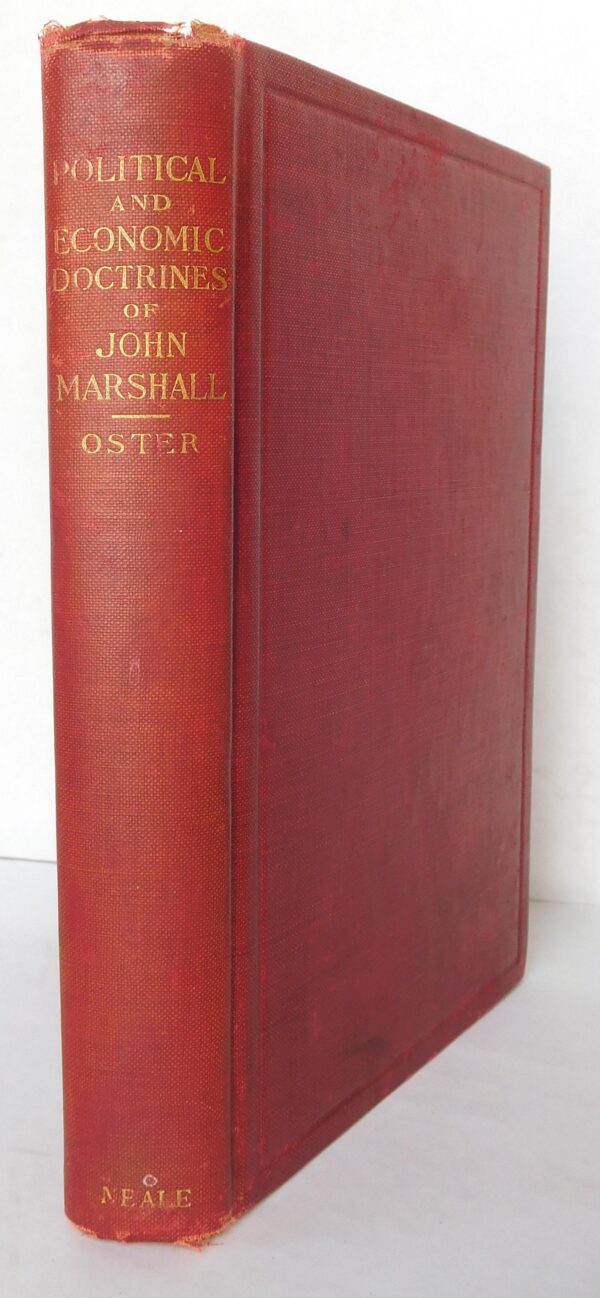
The Political and Economic Doctrines of John Marshall, Who for Thirty-Four Years Was Chief Justice of the United States [with a photograph campaign flyer, “John Edward Oster for Congress”, affixed to the half title]
Oster (ed.) John Edward Original red cloth, a trifle worn, presentation copy, a warm, personal inscription "to my good friend / Royal Dixon [the noted animal rights activist]" Original edition of the "first collection of Marshall materials (other than decisions and bar addresses)", with chapters on his letters (to George Washington, Joseph Story, and James Madison among many others) and Marshall's speeches and writings- $563
- $563
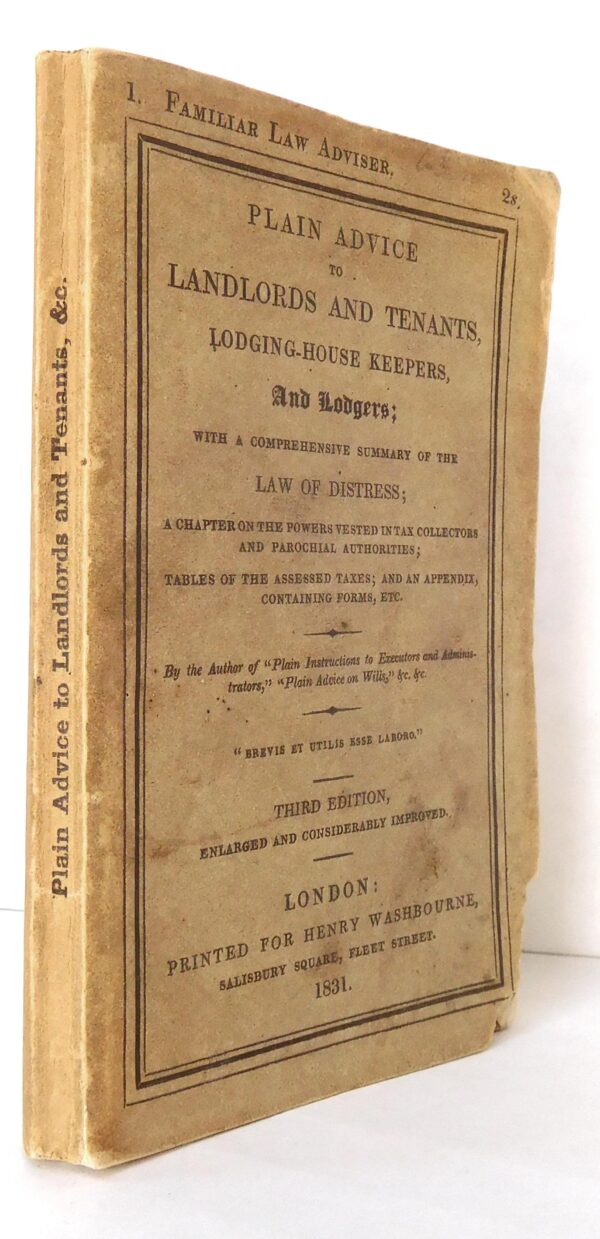
Plain Advice to Landlords and Tenants, Lodging-House Keepers, and Lodgers; With a Comprehensive Summary of the Law of Distress; A Chapter on the Powers Invested in Tax Collectors and Parochial Authorities; Tables of the Assessed Taxes. Third Edition
Brady John Henry Original printed sewn wraps, a trifle frayed, else a very good, clean copy; x, 98 pages + two advertising leaves; no copy in OCLC or COPAC Conjecturally the only surviving copy of an edition of a work of high utility, praised in over a dozen contemporary reviews, Brady the author of several equally useful self-help law books, copies to survive in small proportion to their printings- $313
- $313
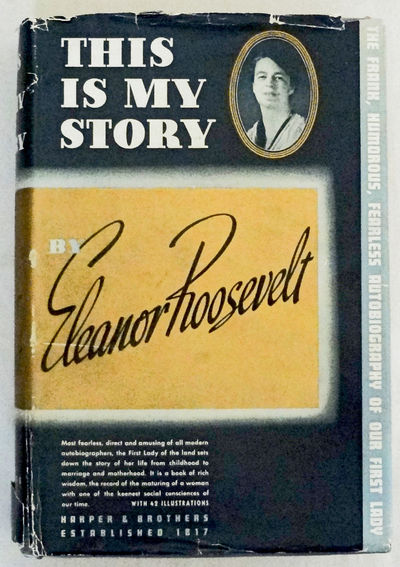
This Is My Story
Roosevelt, Eleanor New Y, 1937 Stated first edition. Had cover. Octavo. [x] 365pp. Illustrated with b/w photographs. Light blue cloth over boards with gilt to spine and embossed signature in dark blue to front. Some offsetting from dust jacket. Dust jacket shows shelf wear with some chipping to edges and original price of $3.00 to front dust flap. The first of Eleanor Roosevelt's autobiographies describing her life up until the presidential election of 1924.- $175
- $175
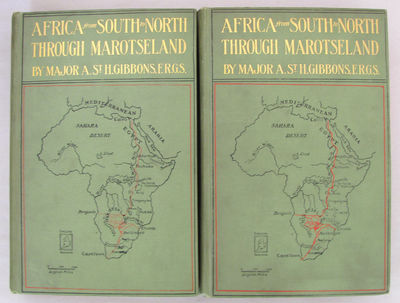
Africa from South to North Through Marotseland
Gibbons, Major A. St. H London and New York, 1904 Two volumes. Hard cover. Octavo. 276pp and 295pp. Green publisher's cloth with map of Africa stamped in black and red and gilt title. Top edges gilt. Some leaves unopened. Many b/w photographs. Covers show light to moderate shelf wear with some darkening of spines. Lacking maps. The author was in charge of the 1898 to 1900 expedition to Marotseland. Aided by grants from the Royal Geographic Society, the British South Africa Chartered Company, and British Military Intelligence, he was able to map fairly accurately the areas of his travels. The object of the expedition were to determine the geographical limits of Lewanika's country, to define the Congo-Zambezi watershed, the discover the main source of the Zambezi, to make a hydrographical and ethnographical survey of Lewanika's territory, to study its resources and industrial possibilities, to ascertain how far the Zambezi and its affluents could be used as navigable waterways and, finally, to furnish Cecil Rhodes with information relative to the selection of a route for a projected trans-continental railway - particularly with reference to the crossing of the Zambezi. Blank Books.- $300
- $300
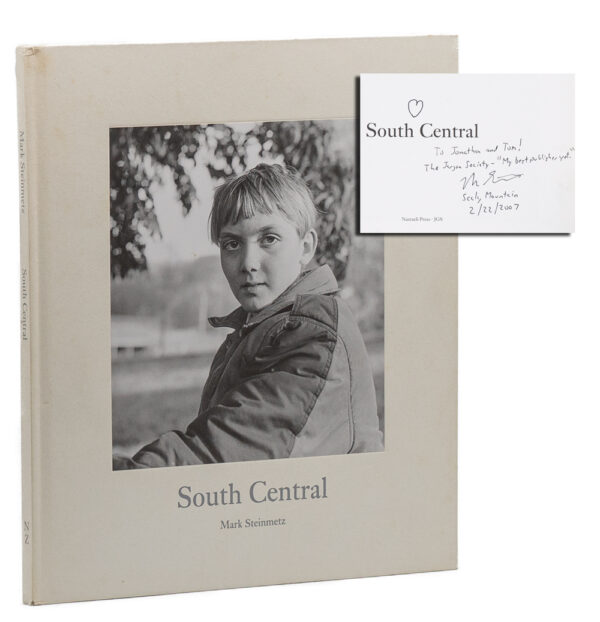
South Central
STEINMETZ, MARK Quarto. 10.5 x 12 in. 71 + [1] pp. Fully illustrated with reproductions of black & white photographs. Limited edition, one of 1000 casebound copies. Inscribed by Steinmetz to Jonathan Williams and Tom Meyer in 2007, "To Jonathan and Tom! / The Jargon Society - 'My best publisher yet.'" Good only in white boards, with large pictorial onlay affixed to upper cover. Rear board moderately waterstained and therefore moderately warped, with moderate waves to latter pages of textblock; no discoloration except to rear board.- $100
- $100
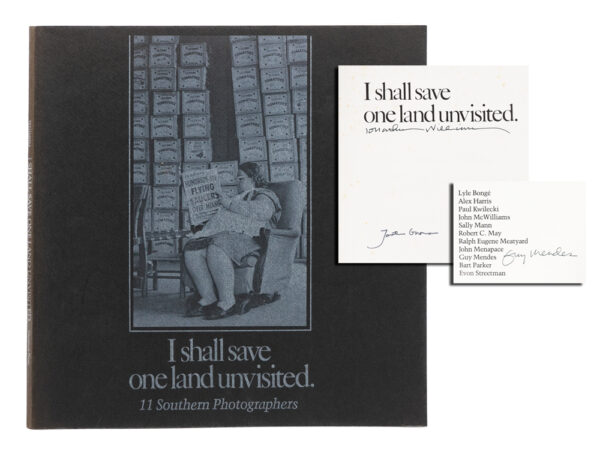
I Shall Save One Land Unvisited: Eleven Southern Photographers. (Signed x Williams, Greene and Mendes)
WILLIAMS, JONATHAN; RAY KASS, Organizer Oblong quarto. 10.5 x 10 in. Unpaginated. Illustrated throughout in black and white. Signed by Jonathan Williams and Jonathan Greene on the half-title page and by Guy Mendes on the verso. Published in correlation with the exhibition from 1978-1981. Near fine in pictorial black wrappers. Includes: Lyle Bonge, Alex Harris, Sally Mann, Ralph Meatyard, John Menapace, et al.- $200
- $200
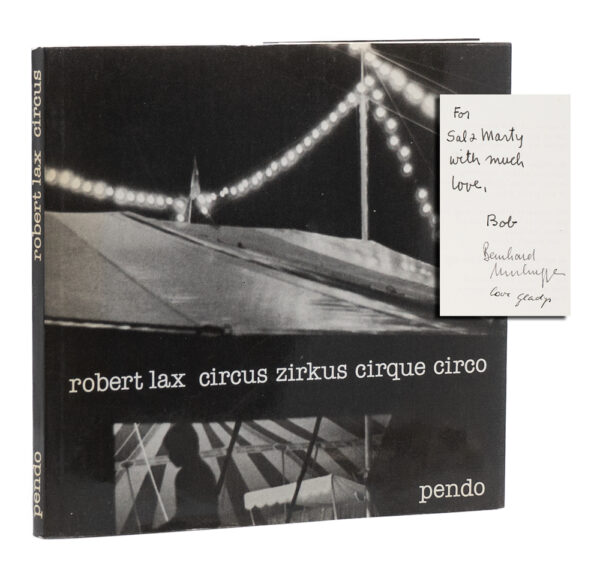
Circus
LAX, ROBERT Small, obong quarto. 8.625 x 7.875 in. Unpaginated. Text in English, French, German, and Spanish. Illustrated with several reproductions of black & white photographs by Bernhard Moosbrugger. Inscribed by Robert Lax on title page, "For / Sal & Marty / with much / love, / Bob." Just about fine in original glossy french-folded pictorial wrappers.- $250
- $250

White Trash Cooking
MICKLER, ERNEST MATTHEW Small square quarto. 134 + [6] pp. Brilliantly designed by Jonathan Greene. Illustrated with a suite of glossy reproductions of color photographs by Ernie Mickler. Published as Jargon 101. First issue, as delineated by R. Philip Hanes, Jr. being listed without his wife as Sponsor to the Edition. Signed by Ernie Mickler in year of publication on title page; signed also by Jonathan Williams inside front cover below his blurb. Fine in original spiral-bound pictorial wrappers.- $900
- $900
![A DOZEN TOUGH JOBS [with] THEM BONES](https://rarebookinsider.com/wp-content/uploads/2022/07/1481938816.0.l.jpg)
A DOZEN TOUGH JOBS [with] THEM BONES
Waldrop, Howard Willimantic, Connecticut, 1989 Willimantic, Connecticut: Mark V. Ziesing, 1989. Octavo, two volumes, cloth. First edition and first hardcover edition respectively. Both volumes limited to 350 numbered copies signed by Waldrop and dust wrapper artists Arnie Fenner and Terry Lee (latter signed Them Bones only). First book is an original short novel, second the author's first solo book, a novel first published as a paperback original in the new Ace Science Fiction Special series in 1984. A fine set in fine dust jackets and cloth slipcase. (#168938)- $100
- $100
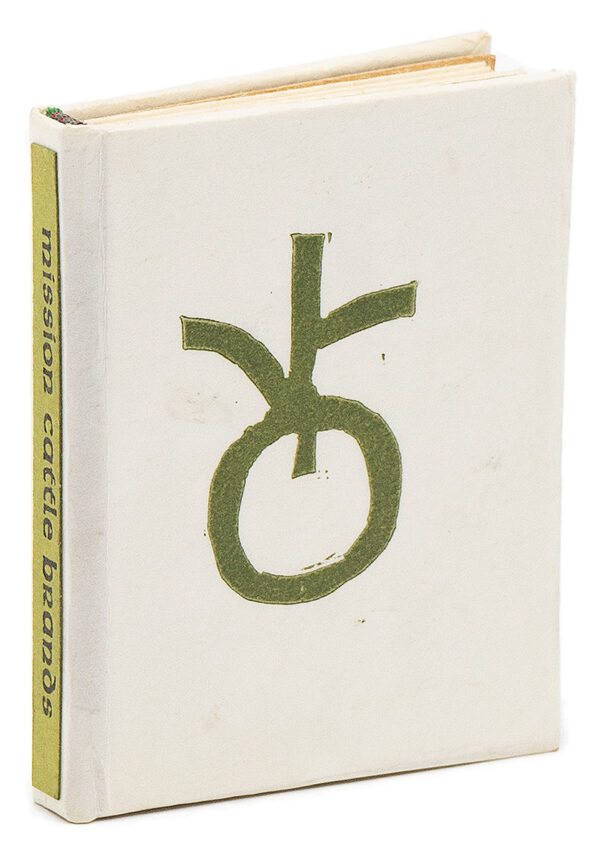
Mission Cattle Brands
THOMAS, FRANK Miniature. 64mo. 2.25 x 2.875 in. Unpaginated. Linocuts by Frank J. Thomas. A miniature book. Printed on Kozo handmade paper; marbled endpapers. Limited edition, numbered 64 of 100 copies. Fine in original full white vellum with printed paper spine label, as issued.- $150
- $150
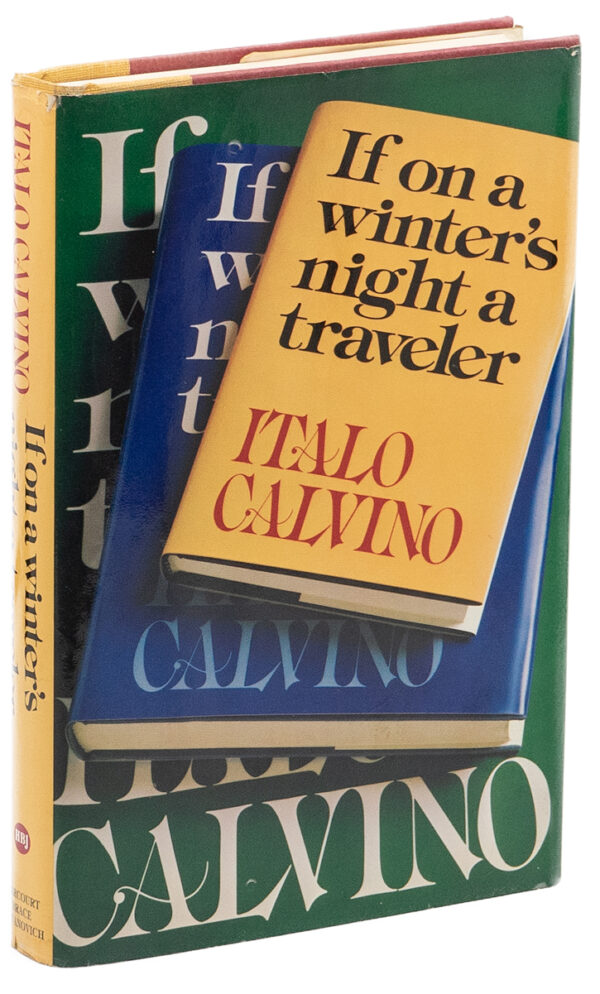
If on a Winter’s Night a Traveler
CALVINO, ITALO Octavo. 5.75 x 8.75 in. 260 pp. Translated from the Italian by William Weaver. Originally published in 1979 as "Se una notte d'inverno un viaggiatore" by Giulio Einaudi Editore (where Calvino was editorial staff). Calvino won the Italian literary award Premio Feltrinelli. Black star to lower board and lower panel of dust jacket. Very good in original yellow quarter-cloth over red boards and very good pictorial dust jacket, with some dampstaining particularly on verso. Some soiling to extremities, however text bright, unmarked and square.- $125
- $125
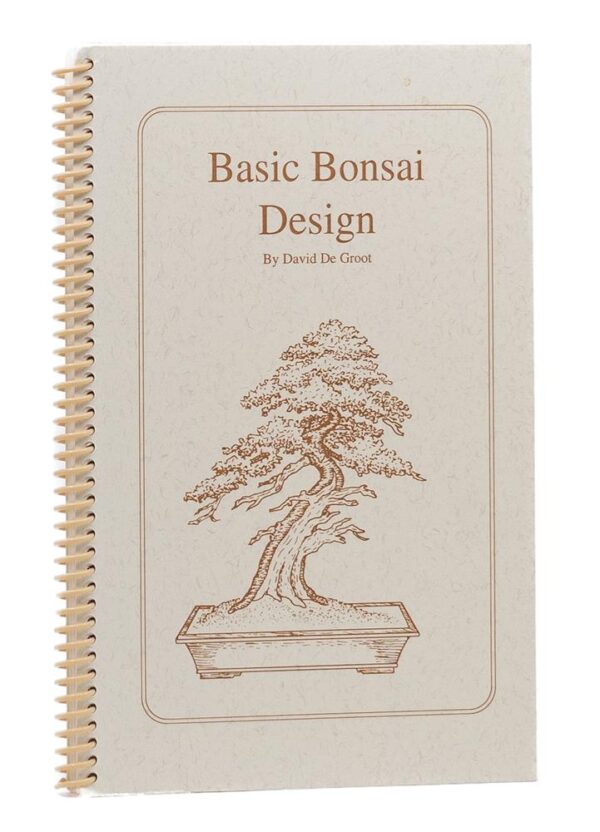
Basic Bonsai Design
De GROOT, David Octavo. 5.5 x 8.5 in. ii, 102 pp. Illustrated with over seventy black & white figures and reproductions of photographs. From a limited edition of 1,500 copies. DeGroot acted as curator of Weyerhaeuser's Pacific Rim Bonsai Collection (now Pacific Bonsai Museum) since its creation in 1989 and has been studying and practising bonsai since 1972, with masters such as Yasuo Mitsuya. De Groot curated his own retrospective at Pacific Bonsai Museum in 2022. This title is now in its seventh printing; scarce, especially in this first printing. De Groot's first book. Fine in original spiral bound pictorial wrappers.- $150
- $150
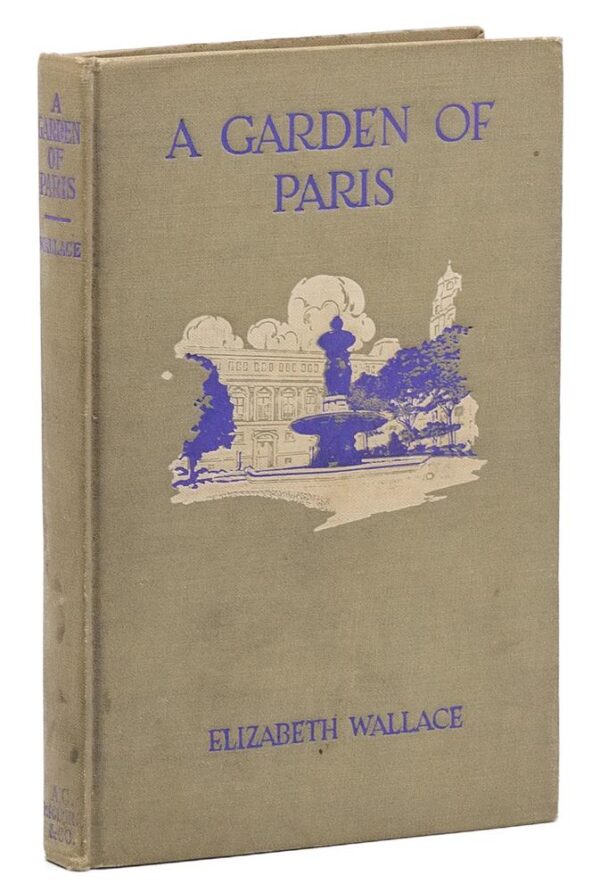
A Garden of Paris
WALLACE, ELIZABETH; FRED J. ARTING, Illustrator Octavo. 5.25 x 7.75 in. 198 pp. Illustrated with 15 black & white reproductions of drawings by Arting plus frontispiece. From The North American Review, Volume 194 (1911): "Wallace.lived once in a serious-fronted house on the Rue des Saint Peres, but her bedroom window looked out on a garden.from here the author makes trips to Fontainebleau, describes the garden of Tante Placide's gentle heart, or discourses in the garden of Life. Tender, evanescent, slight, and gentle, these essays in and on a garden have a very special charm, and once again it is a pity that they are not better illustrated." A crisp copy. Near fine in original grey cloth, titled and decorated in purple and white. Very lightly soiled, with spine lettering slightly dulled. Binding square and tight, text clean and bright.- $100
- $100

The Findhorn Garden
FINDHORN COMMUNITY; GEORGE TREVELYAN, Foreword by Quarto. 8.25 x 9.5 in. x, 180 pp. Occasionally illustrated with black & white reproductions of photographs. Uncommon first hardcover printing from Great Britain, with a foreword by new age thinker and educator Sir George Trevelyan. The Findhorn Community was "unintentionally established" in the 1940's in coastal Scotland, where a community was founded upon principles considered to be "new age" at the time; today the Findhorn Foundation intentional community (across four sites) is home to over 400 members. The Findhorn was a mecca for some "curious horticulturists", their vegetable gardens being prolific even in poor soil. Near fine in very good, edgeworn pictorial dust jacket, unclipped. Previous owner's bookplate to front pastedown.- $125
- $125
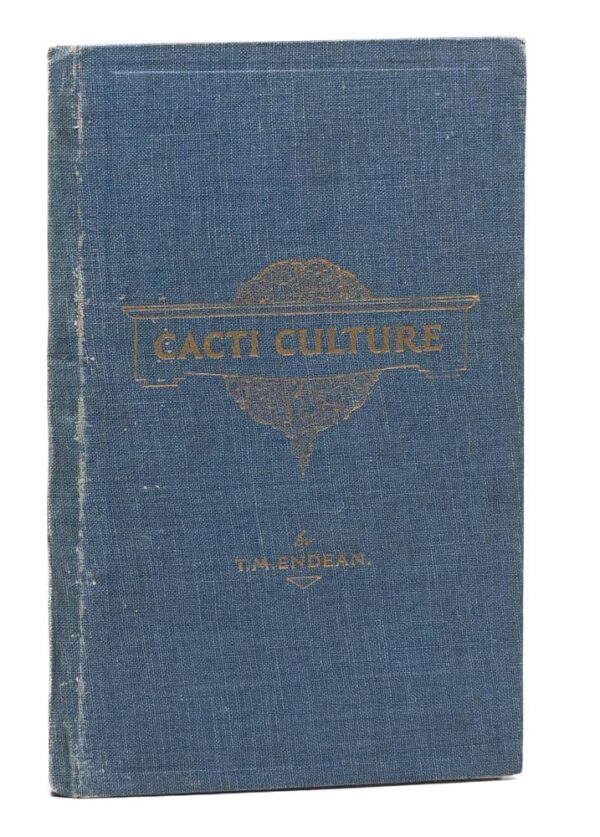
Cacti Culture
ENDEAN, T.M. Thin octavo. 5 x 7.5 in. Three black & white full page plates with key at verso plus frontispiece of Endean. Rare. This book was featured in a library note of the Cactus Journal (Vol.1, No.1-September 1932) as one of the great member offerings housed at the Royal Horticultural Hall to be "consulted at meetings and loaned to members." Endean was awarded Silver Gilt Banksian Medal for Cacti and Succulents (1928) and Silver Cup for Cacti and Mesembryanthemums (1928) by the Royal Horticultural Society. Four copies recorded in OCLC. From the collection of biologist T. L. Mellichamp (Charlotte, NC), for whom the abbreviation "Mellich." is used to indicate the professor's authority on the scientific description and classification of vegetables. Upper staple of internal pamphlet separated from cloth binding, lower starting, otherwise very good in original blue cloth with lettering in gilt.- $225
- $225

LAVONDYSS: JOURNEY TO AN UNKNOWN REGION
Holdstock, Robert London, 1988 London: Victor Gollancz Ltd, 1988. Octavo, boards. First edition. Signed on the title page by Holdstock. Sequel to MYTHAGO WOOD (1984). Winner of the British Science Fiction Association Award, Novel, 1989. A fine copy in fine dust jacket. (#168889)- $100
- $100
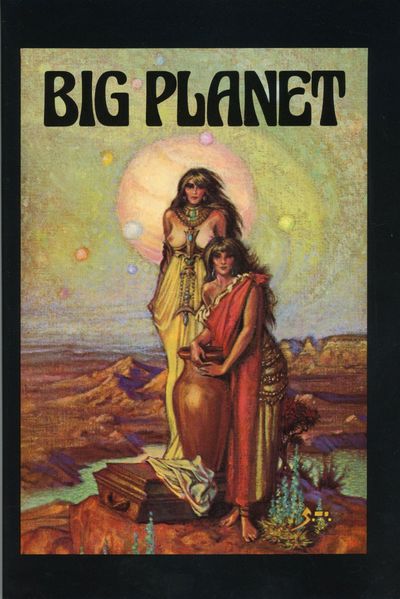
BIG PLANET ..
Vance, John Holbrook, writing as "Jack Vance. San Francisco, California, Columbia, Pennsylvania, 1978 San Francisco, California, Columbia, Pennsylvania: Underwood-Miller, 1978. Octavo, cloth. First printing of the unabridged text. One of 111 numbered copies with bookplate signed by Vance and artist Steve Hickman affixed to the limitation leaf. Sargent, British and American Utopian Literature, 1516-1985, Additions. A fine copy in fine dust jacket. (#168894)- $450
- $450

THE HANDMAID’S TALE
Atwood, Margaret Boston, 1986 Boston: Houghton Mifflin Company, 1986. Octavo, cloth-backed boards. First U.S. edition, first printing with code "V 10 9 8 7 6 5 4 3 2 1" on copyright page. "Dystopian novel of a world ruled by militaristic fundamentalism in which sexual pleasure is forbidden." - Anatomy of Wonder (2004) II-57. Made into a film in 1990. Winner of the 1985 Governor General's Award. 1986 Nebula nominee. First winner of the Arthur C. Clarke Award. Broderick and Di Filippo, Science Fiction: The 101 Best Novels, 1985-2010 #1. Sargent, British and American Utopian Literature, 1516-1985, p. 426. A fine copy in fine dust jacket. A lovely copy. The publisher's "bookcard" for THE HANDMAID'S TALE is laid in. (#168891)- $750
- $750
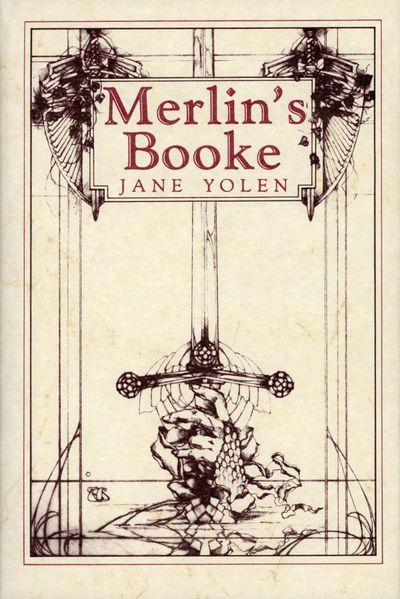
MERLIN’S BOOKE ..
Yolen, Jane Minneapolis, Minnesota, 1986 Minneapolis, Minnesota: Steel Dragon Press, 1986. Octavo, cloth. First hardcover edition. Limited to 1200 copies of which this is one of 200 numbered copies signed by Yolen and artist Thomas Canty. Collects thirteen stories and poems. 1987 World Fantasy Convention nominee for best anthology/collection. A fine copy in fine dust jacket. (#168898)- $150
- $150

THE DYING EARTH ..
Vance, John Holbrook, writing as "Jack Vance. San Francisco, California, Columbia, Pennsylvania, 1976 San Francisco, California, Columbia, Pennsylvania: Underwood-Miller, 1976. Octavo, cloth. First hardcover edition. "Cycle of stories set in a decadent far future when civilization has virtually disappeared and magic has reclaimed the world." - Barron (ed), Fantasy and Horror (1999) 5-296a. "Little noticed at initial publication, this work launched a whole subgenre of fictional futures in which magic replaces science ..." - Anatomy of Wonder (1995) 3-185. The author's first book. Anatomy of Wonder (2004) II-1162. Barron (ed), Fantasy Literature 3-345. Cawthorn and Moorcock, Fantasy: The 100 Best Books 70. Pringle, Modern Fantasy: The Hundred Best Novels 11. Schlobin, The Literature of Fantasy 1066. Survey of Modern Fantasy Literature I, pp. 441-46. Survey of Science Fiction Literature II, pp. 665-70. Tymn (ed), Fantasy Literature, pp. 168-69. A fine copy in fine dust jacket. (#168893)- $250
- $250

CONSIDER PHLEBAS
Banks, Iain London, 1987 London: Macmillan, 1987. Octavo, boards. First edition. Signed on the title page by Banks. "Conflict between two dystopian cultures, one Islamic, the other communist. First of his novels of the Culture, few of which have explicitly utopian content but can collectively be seen as utopian." - Sargent, British and Utopian Literature, 1986-2009. Anatomy of Wonder (2004) II-72. A fine copy in fine dust jacket. (#168905)- $750
- $750
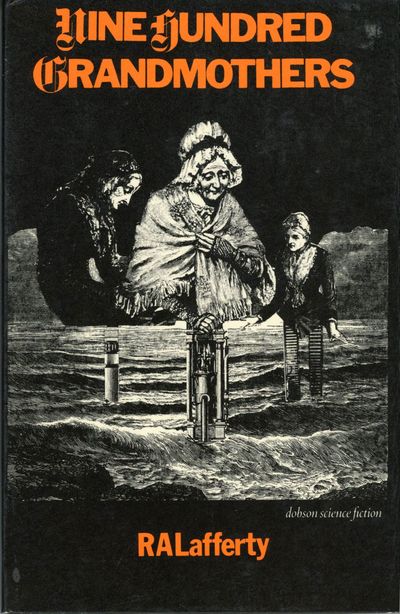
NINE HUNDRED GRANDMOTHERS
Lafferty, R[aphael] A[loysius] London, 1975 London: Dennis Dobson, 1975. Octavo, boards. First British (and first hardcover) edition. Collects twenty-one stories. "The first and best of Lafferty's collections ..." - Anatomy of Wonder (2004) II-622. Includes two utopian stories, "Primary Education of the Camiroi" and "Polity and Custom of the Camiroi." Also has a robot AI story, "All the People," and "What's the Name of That Town?," an Eipktistes story. Sargent, British and American Utopian Literature, 1516-1985, pp. 300; 304. A fine copy in fine dust jacket. A lovely copy. (#168885)- $250
- $250

TO SAY NOTHING OF THE DOG ..
Willis, Connie New York, London, Toronto, Sydney, Auckland, 1998 New York, London, Toronto, Sydney, Auckland: Bantam Books, 1998. Octavo, boards. First edition. Winner of the 1999 Hugo award for best novel. 1998 Nebula award nominee. Anatomy of Wonder (2004) II-1268. Hartwell, 200 Significant SF Books by Women, 1984-2001. Publisher's publicity sheet laid in. A fine copy in fine dust jacket. (#168892)- $100
- $100
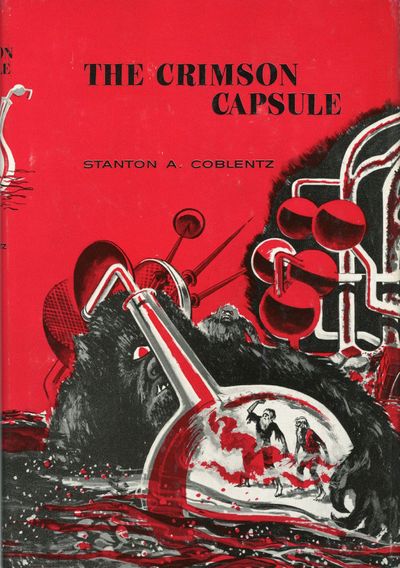
THE CRIMSON CAPSULE
Coblentz, Stanton A[rthur] New York, 1967 New York: Avalon Books, 1967. Octavo, cloth. First edition. Time travelers are transported to a far future Earth dystopia where they are captured by ape-like mutants ruled by mutant "Grand Regulators." Sargent, British and American Utopian Literature, 1516-1985, p. 303. A fine copy in fine price-clipped dust jacket. (#168914)- $100
- $100
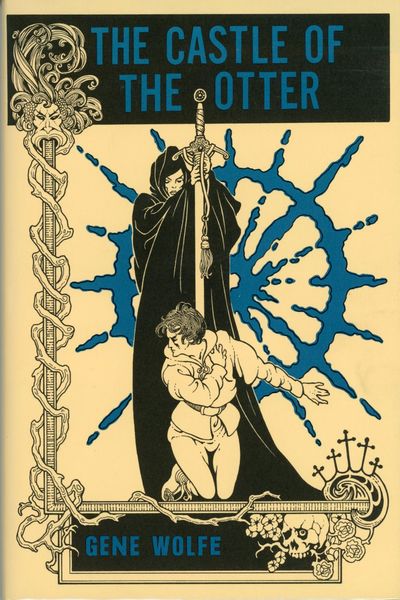
THE CASTLE OF THE OTTER
Wolfe, Gene Willimantic, Connecticut, 1982 Willimantic, Connecticut: Ziesing Brothers, 1982. Octavo, cloth. First edition. Limited to 520 copies of which this is one of 420 trade copies. A book about The Book of the New Sun. Includes essays, lexicon, self interview and a bibliography, the latter compiled by Gordon Benson, Jr. A fine copy in fine dust jacket. (#168896)- $100
- $100

THE BRIDGE
Banks, Iain London, 1986 London: Macmillan, 1986. Octavo, boards. First edition. Signed on the title page by Banks. "THE BRIDGE (1986), perhaps his finest early work, once again conflates the literal with 'metaphorical' displacements treated with a knowing literalness characteristic of the work of late twentieth-century writers of significance, regardless of their marketing 'identity;' in this tale, a comatose man relives (or anticipates) his own life, which is represented in matrix form as an enormous bridge; among the interstices of this potent Icon he engages in a rather hilarious parody of sword-and-sorcery conventions." - John Clute and David Langford, SFE (online). The author's third book. Barron (ed), Fantasy Literature 4A-17. Pringle, Modern Fantasy: The Hundred Best Novels 95. A fine copy in fine dust jacket. (#168902)- $350
- $350
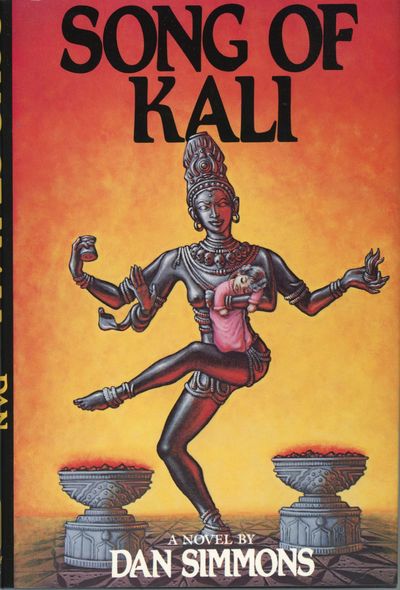
SONG OF KALI
Simmons, Dan [New York], 1985 [New York]: Bluejay Books Inc., 1985. Octavo, cloth. First edition. The author's first book, "a stunningly original horror novel, one of the best published in the 1980s." - Barron (ed), Fantasy and Horror (1999) 6-337. Winner of the 1986 World Fantasy Award for best novel. Barron (ed), Horror Literature 4-272. Jones and Newman (eds), Horror: 100 Best Books 94. A fine copy in fine dust jacket. (#168900)- $350
- $350
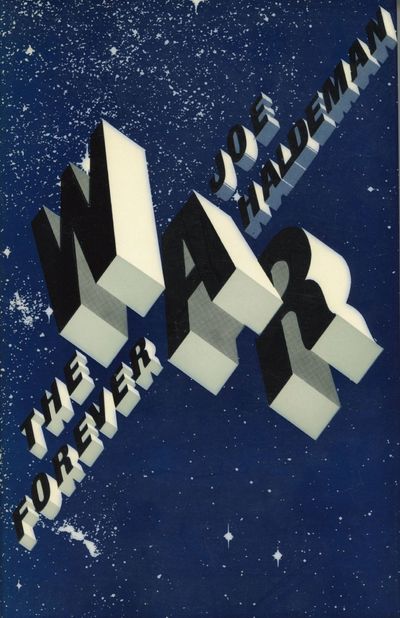
THE FOREVER WAR
Haldeman, Joe London, 1975 London: Weidenfeld and Nicolson, 1975. Octavo, boards. First British edition. "Tough, slick narrative of an interstellar war which lasts [over] 1000 years. To the soldier hero, it seems to last about ten years, thanks to the time-dilation effect of faster-than-light travel. Good, realistic, military SF which actually subverts many of the clichés of that category ... (he was a Vietnam veteran, which helped). Initially rejected by 18 publishers, it has since sold over a million copies." - Pringle, The Ultimate Guide to Science Fiction, second edition (1995), pp. 141-2. Haldeman's first SF novel. Winner of the 1975 Hugo award for best novel. Anatomy of Wonder (2004) II-479. Sargent, British and American Utopian Literature, 1516-1985, p. 360. Survey of Science Fiction Literature II, pp. 813-8. A fine copy in fine dust jacket. Uncommon thus. (#168888)- $250
- $250
![[Text in Russian] Atlas Trinadtsati Chastei S. Peterburga s podrobnym izobrazheniem naberezhnykh](https://rarebookinsider.com/wp-content/uploads/2022/06/1473437318.0.l.jpg)
[Text in Russian] Atlas Trinadtsati Chastei S. Peterburga s podrobnym izobrazheniem naberezhnykh, ulits, pereulkov, kazennykh i obyvatel’nykh domov [WITH] Alfabitnyi ukazatel’ k Atlasu 13-ti chastei S. Peterburga [An Atlas of the Thirteen Parts of St. Petersburg with a detailed image of its embankments, streets, alleyways, and town houses [WITH] An Alphabetical Index] [Inscribed and Signed to Dmitry Yegorovich Benardaki]
TSYLOV, Nikolai Ivanovich St. Petersburg, 1849 St. Petersburg: s.i., 1849. First Edition. Two volumes; small quarto (26.5cm.); uniformly bound in publisher's blind-ruled purple cloth, gilt-lettered spines; atlas volume includes 392 numbered street plans as well as one hand-colored map of the city and 13 hand-colored district maps (collated and complete); index volume: [6],279,[1],39pp. Cloth extremities rather faded, spines uniformly sunned to tan, a few plates trimmed a bit close touching numbers, else a Very Good, internally fine set of the first atlas of St. Petersburg, albeit lacking errata leaf. Front free endpaper of the atlas inscribed and signed by Tsylov "To Dmitry Yegorovich Benardaki / With the sincerest devotion / From the author / Nikolai Tsylov"). The seed of St. Petersburg was first planted in 1610 as a small but powerful fortress built where the Neva meets the Okhta River. The Swedish, having recently annexed a large swathe of land from the Russians during the "Smuta" (a.k.a. the Time of Troubles, 1598-1613), were in need of a stronghold to preserve their rule over the newly-acquired region of Ingria and thus Nyenschantz was built. For almost a hundred years the fortress remained under threat of invasion, rebuffing at least one major attack, in 1656. By the mid-1670s the fortress had been modernized and expanded to house as many as six hundred. But while the Swedish saw the location as a protective measure, Peter the Great saw something much more powerful: a gate to the Western world. By 1700 the Great Northern War had broken out and by 1703 the fortress had fallen and Ingria was once again Russian soil. With deliberation Peter the Great made plans to establish a city on the estuary of the Neva River, and that city would be the new capital of Russia, St. Petersburg. Situated as a port town and a link between Russia and the West, St. Petersburg was for the next two hundred years a cosmopolitan and Western-looking capital city, while Moscow came to represent Russia's medieval and Orthodox origins. Fittingly, the first topographical description of the city, which appeared in 1713, was published not in Russia, but in Leipzig, anonymously, and in German. Speculation has been made that the work was commissioned by Peter himself, who saw the need to paint a positive portrait of the city amongst his Western peers. Apparently he saw no need to win over his own subjects, and for much of the 18th century there remained a dearth of secular Russian literature, printed in Russia, about Russia. The first full-length book about St. Petersburg in Russian arrived on the scene in 1749 by the hand of a zealous librarian named Andrei Bogdanov, but his oversized folio was never published. The most popular description of the city published in the 18th century was by a German, Johann Gottlieb Georgi. The title translates as "Description of the Russian Imperial Capital City St. Petersburg and the Memorable Sites in Its Suburbs, with a Map" (1794), and included detailed descriptions of the school, churches, hospitals, charitable institutions, and government agencies throughout the city. The work was hugely influential, saw several editions in its original German, as well as a French translation, but most importantly, it was translated into Russian. Its thumbprint can be seen on Tsylov's atlas. Between the publication of Georgi's "Description" and Tsylov's "Atlas," however, another sixty years and the Napoleonic Wars intervened. St. Petersburg had now been scrutinized by Fyodor Dostoevsky and Nikolai Gogol, among others, yet some still decried the lack of literature devoted exclusively to the city itself. Significantly, in 1845, a leading member of the Westernizing faction of Russia's budding intelligentisia named Vissarion Belinsky, published an anthology titled "A Physiology of Petersburg," in which the author accused Russian society of missing proper "belletristic works in the form of travel narratives, [puteshestriviia], accounts of tours [poezdki], sketches, stories, and geographic descriptions [opisaniia] that would acquaint [the public] with the various parts of boundless and diverse Russia" (cf. Emily D. Johnson, "How St. Petersburg Learned to Study Itself" (2006), p. 35). In the next five years a flood of travelogues and topographical studies appeared on the market, best among them the first atlas of St. Petersburg, compiled by the high-ranking officer Nikolai Ivanovich Tsylov (1801-1879). Tsylov's atlas was born of a smaller such work he had compiled, of a single district of the city. This had been received with such warmth that he felt compelled to produce the present work, a democratic and nearly microscopic depiction of the city in which the street plans are even demarcated by building materials (stone, wood, or a mix). The atlas is accompanied by a substantial index of the buildings, including a directory of the major townhouses, their inhabitants, and even the number of floors (rarely exceeding four). Of special note are the thirteen maps preceding each section, expertly hand-colored in all extant copies. Based on auction records and library holdings it can be surmised that very few sets were issued, possibly by subscription or privately: of the three copies located in OCLC (Harvard, NYPL, Wisconsin) at least the Wisconsin copy is also inscribed by Tsylov. NUC adds a copy at the Library of Congress; COPAC adds copies at the British Library and Cambridge. Provenance: Inscribed and signed by the author to Dmitry Yegorovich Benardaki (sometimes spelled Dmitrii Egorovich) (1799-1870), presumed to be the inspiration for Murazov in Nikolai Gogol's novel "Dead Souls." Already in the 1830s Benardaki had amassed an enormous fortune through speculation on wheat. He was first introduced to Gogol by the Russian historian Mikhail Pogodin, a relationship rather novelistically described by Henri Troyat in his biography of Gogol "Divided Soul" (1973): "From [Benardaki's] conversation...Gogol discovered the ruthless world of competition and profit, and the struggle for market control. The eloquent and astute Benardaki became for him a personification of the practical man. The Russian of the future must be modeled upon this man. What a fine character for a novel this Christian millionaire would make!" (p. 200). A rather more grounded description of the relationship can be found in David Christian's article "The Neglected Great Reform," published in "Russia's Great Reform, 1855-1881") (1994). According to Christian, Benardaki loaned Gogol some money in 1839 "and it may be that a grateful Gogol took him as his model for the virtuous tax farmer Muzarov" (p. 113). In any case, Benardaki's 1863 patent of nobility sold at Sotheby's in 2007 for an eye-watering sum.- $18,500
- $18,500
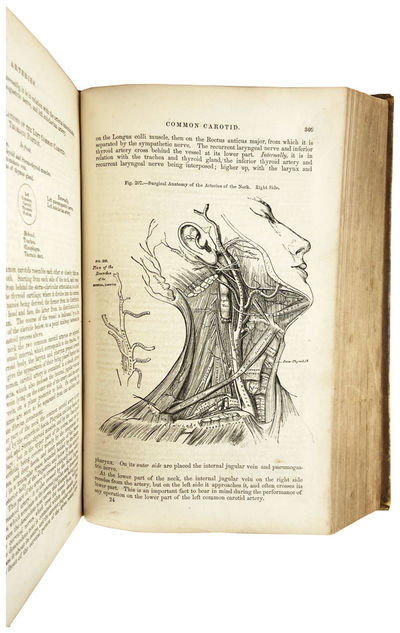
Anatomy, Descriptive and Surgical
GRAY, Henry; H.V. Carter, illus Philadelphia, 1862 Philadelphia: Blanchard and Lea, 1862. Second American from the Revised and Enlarged London Edition. Large octavo (26cm.); publisher's full sheep, black gilt-lettered spine label; xxxii,[33]-816pp.; hundreds (395 to be exact) woodcut illus. throughout. Leather quite scuffed with some peeling along margins, most notably to upper cover, old dampstain along bottom edge of upper cover slightly bleeding into early preliminaries, several contemporary pencil ownership inscriptions to front free endpaper, as well as 20th century ownership rubberstamp to front free endpaper and dedication page. Overall a Good to Very Good copy, internally clean and sound. The most comprehensive, and as yet enduring, medical textbook produced by the modern Western world. Rather than run the risk of hyperbolizing, we've turned to the academics to do it for us: "[T]his workhorse of medical pedagogy has remained in everyday use far longer than any medical instruction manual of modern times, and is likely to go on, and on, and on--as far as the futuristic eye can see. [The 39th edition, from 2014] out-lives one after another of its now-huge stable of editors, even though much of the text in its pages, and a great multitude of its illustrations, have not significantly changed since its original publication in 1858" (Sherwin Nuland, "Books and Men, Redux," in "Proceedings of the American Philosophical Society," Vol. 158, no. 1, March, 2014, p. 7).- $2,250
- $2,250
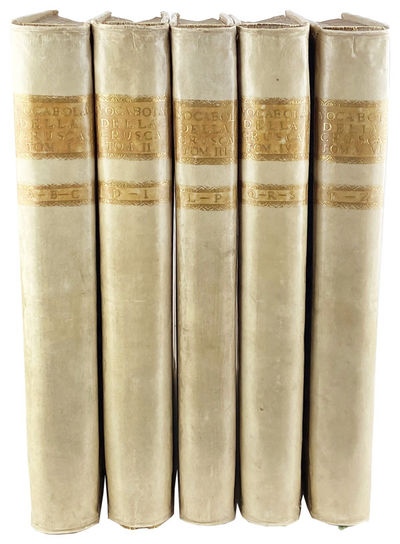
Vocabolario degli Accademici della Crusca. Impressione napoletana secondo l’ultima di Firenze con la giunta di molte voci raccolte dagli autori approvati dalla stessa Accademia
ACCADEMIA DELLA CRUSCA Napoli, 1746 Napoli: A spese di Giuseppe Ponzelli / Nella stampería di Giovanni di Simone, 1746. Six volumes in five; folio (42.5cm.); uniformly bound in full contemporary vellum, gilt spine lettering, all edges speckled grey and orange; collated and complete (collation available upon request); engraved illus., head- and tail-pieces, and initials throughout. Minor wear, chiefly at corners, textblock occasionally rather foxed and darkened from exposure to ink, else a Very Good, quite attractive set of this superlative edition. Updated edition of this monumental dictionary first published in 1612 after nearly thirty years of research (the Accademia itself was founded in 1583). Like most Renaissance dictionaries of vernacular language, the "Vocabolario" laid a heavy emphasis on the written language and usage of Florentine authors of the 15th century, entirely excluding the spoken language and dialects of the lower and craft classes. This edition, published the year Voltaire joined the Accademia, finally broke the mold of its predecessors. Under the guidance of signor Don Pasquale di Tommasi, the "Vocabolario" was finally "enriched with so many words overlooked by Florentine scholars" (Ferdinando Galiani in his preface to the second edition of "Della Moneta"). Not just an improvement on earlier examples, the Naples edition is one of exceptional beauty, adorned throughout with engraved vignettes blending words found in the present volume, often in humorous and imaginative ways (a fluffy, possum-like animal rooting through a cloud of flour: "Grufolando infarinato"). VANCIL, p. 2.- $2,750
- $2,750
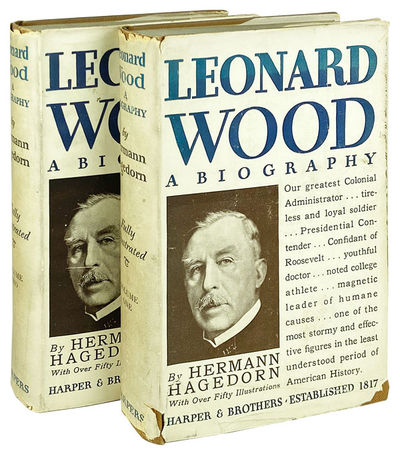
Leonard Wood: A Biography
[WOOD, Leonard] HAGERDORN, Hermann New York, 1931 New York: Harper & Brothers Publishers, 1931. First Edition. Two volumes; large octavos (24.5cm.); publisher's cloth in uniform white photo-illustrated dust jackets, Vol. I retaining original price ($10), Vol. II price-clipped, grey topstain; xii,[2],436; viii,[2],524pp.; portrait frontispieces, fourteen leaves of photographic illus. printed on rectos and versos. Light wear to cloth extremities, jackets a bit chipped and worn at margins including a few small losses and occasional closed tears touching text without loss of meaning, general dust-soil, else a Very Good, sound set overall. Massive biography of American colonial administrator General Leonard Wood (1860-1927), a key player in the governance of the Philippines following the Spanish-American War.- $150
- $150
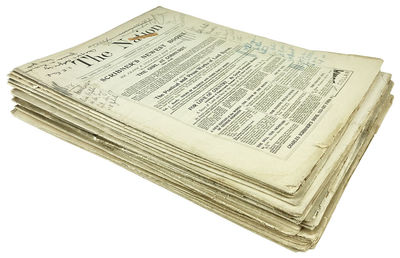
Broken Run of Twenty-Two Issues of “The Nation
[SPANISH-AMERICAN WAR] New York, 1899 New York: The Nation, 1899. First Edition. Twenty-two volumes; quartos (30.5cm.); uniformly stitched self-wrappers. Collection comprises the following issues: Nos. 1714 (May 5, 1898), 1716-19, 1721, 1724, 1730-2, 1734, 1736-7, 1746-7, 1751-2, 1754, 1762-3, 1766, & 1770 (June 1, 1899). Condition ranges from Near Fine to Good only, with a few of issues starting to split at spine, two issues with upper covers separated but present, and the earliest issue with rather large loss along bottom margin affecting text of the publisher's ads; additionally, most have contemporary pencil marginalia to upper covers. A substantial collection covering the major events of the Spanish-American War, the earliest issue opening with General Dewey's "annihilation" of the Spanish fleet in the Philippines in early May. However, as sick and wounded troops began to return and the conditions of the war came to light, the weekly news magazine's tone shows a marked shift. Within a couple of weeks, the magazine's pro-expansionist articles had shifted entirely in the opposite direction, and by September 8th the opening segment begins: "The sad condition of our returning troops has raised this inquiry to the minds of those whom Mr. Lincoln called 'the plain people': If we cannot administer affairs in our own territory better than Camp Algers, Thomas, Wikoff, and Black have been administered, how are we likely to administer the Philippine Islands ten thousand miles away?" Indeed, the coverage of the Treaty of Paris on December 10th speaks to the disillusionment wrought by the war. The opening segment on December 15th begins: "The treaty has been signed at last and we are in possession of Cuba, Porto Rico, and as much of the Philippines as the Spaniards possessed, which is not much.- $150
- $150
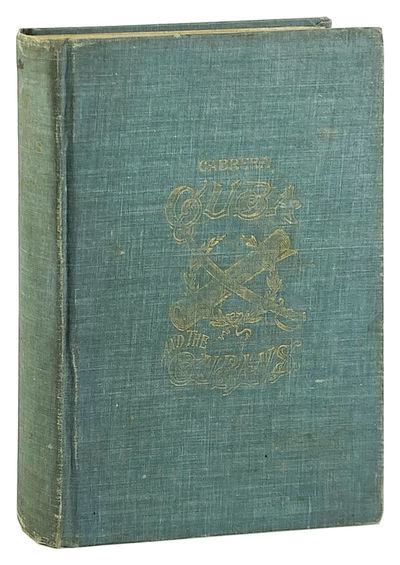
Cuba and the Cubans
CABRERA, Raimundo; Laura Guiteras, trans.; Louis Edward Levy, ed Philadelphia, 1896 Philadelphia: Levytype Company, 1896. First American Edition. Octavo (20cm.); publisher's blue pictorial cloth stamped in gilt; xvi,17-442pp.; sixteen leaves of illus. printed on rectos and versos, color folding map bound in rear, dozens of engravings in text throughout. Cloth sizing rather rubbed at margins, spine panel and gilt quite dulled, some offsetting to endpapers, else Very Good, internally clean and sound overall. Biographical history of Spanish colonial Cuba, published just two years before the hostilities broke out between Spain and the United States. Chapters and biographies are divided by industry, including hospitality, journalism, law, literature, and local government.- $125
- $125
![[Sammelband] Military Notes on Cuba [Bound With] Staffs of Various Armies](https://rarebookinsider.com/wp-content/uploads/2022/04/1467641278.0.l.jpg)
[Sammelband] Military Notes on Cuba [Bound With] Staffs of Various Armies
UNITED STATES WAR DEPARTMENT Washington DC, 1899 Washington DC: Government Printing Office, 1899. Mixed Editions. Octavo (24cm.); two volumes bound in one; contemporary cloth-backed marbled boards, gilt-lettered spine, original blue printed wrappers of both titles bound in; x,507; 231pp.; tables throughout. Ex-Cornell University Library with their extensive contemporary markings, including gift ex libris from the U.S. War Department, some general minor edge wear with brief exposure at board margins, else a Very Good, still quite sturdy copy. "Military Notes on Cuba" is described as a revised edition in the introductory notes, while "Staffs of Various Armies" is a first edition. Extensive colonialist description of Cuba composed in the wake of the Spanish-American War, providing brief overviews of the country's climate ("Hurricanes may occur from August to October"); Diseases and Hygienic Measures ("The worst place for foreigners on their arrival in Cuba is the coast, and the important cities are generally located along the worst part of the coast"); and Fruits ("The fruits of Cuba are numerous and delicious"). The majority of the text is then divided geographically, beginning with the city of Habana.- $175
- $175
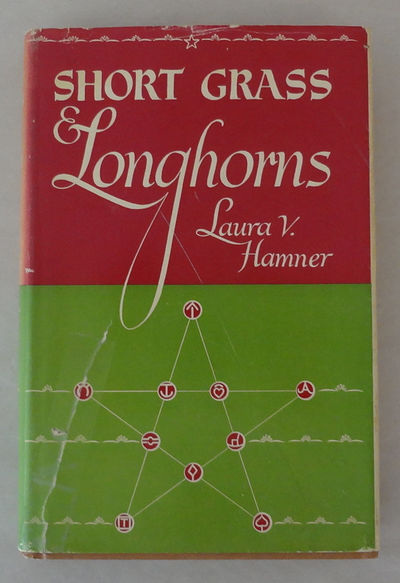
Short Grass & Longhorns
Hamner, Laura V. Norman, OK, 1943 Hard cover. Octavo. [viii] 269pp. with many b/w photographs. Book in very good condition. Price clipped dust jacket shows shelf wear with a closed tear to front and fading to spine. Compiled from hundreds of first hand interviews "Short Grass & Longhorns" is a meticulously researched history of the cattle industry in the Texas panhandle with anecdotes concerning many of the now famous people of the region.- $110
- $110
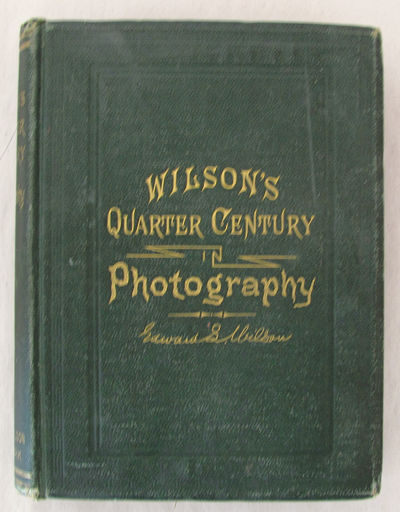
Wilson’s Quarter Century in Photography
Wilson, Edward L. New York, 1887 Hardcover. Large octavo. [xv] 528 plus 20pp advertisements. Green peddled cloth over beveled boards with gilt lettering. Faint moisture mark to fore-edge of first few pages otherwise very good. Light shelf wear to cover with wear to spine ends. Edward Livingston Wilson was an American photographer, writer and publisher based in Philadelphia. In 1864 he began the Philadelphia Photographer magazine. He served as an energetic officer of the National Photographic Association of the United States.- $140
- $140
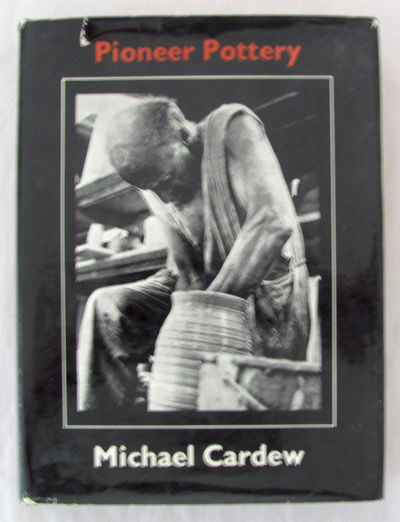
Pioneer Pottery
Cardew, Michael London, 1973 Hard cover. Oversized octavo. [xv] 327pp. Signed and dated by author on ffep Boulder/1978. Also a handprint in clay to the title page. Previous owner's name to corner of ffep. Near fine in a very good dust jacket which shows tears to top edge. Michael Cardew has been described as "one of the finest potters of the century and one of the greatest slipware potters of all times." There are collections of his work in museums in Britain, the United States, Australia and New Zealand.- $250
- $250
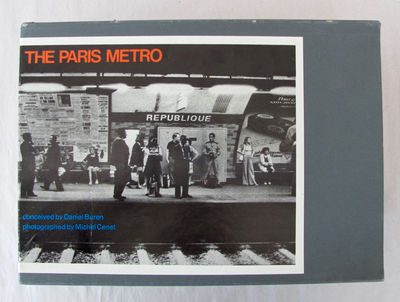
The Paris Metro
Buren, Daniel (Artist-Editor) Cenet, Michel (Photographer) London, 1973 Two volumes in slipcase. Oblong with stiff card covers. Each 207pp. Text in six languages. Both volumes clean and unmarked with very tight bindings and slight sun fade to spines. Slip case is in good condition with shelf wear and a little rubbing to edges. A book of photographs taken in over a hundred stations of the Paris metro Each photograph is centered on a billboard and in the upper right corner of each billboard vertical white and coloured stripes. The pieces of white and blue vertically striped paper put up/pasted in this way were a pretext for Michel Cenet's photographs.- $225
- $225

We’ll All Wear Silk Hats
Bailey, Lynn R. Tucson, AZ, 1994 Signed by author on the title page. Hard cover. Octavo. [x] 219pp. Fine in a fine dust jacket which is in an archival quality mylar sleeve. The story of two Cochise County ranches...more than a century ago they monopolized much of the one million acres comprising the Sulphur Spring Valley.- $295
- $295
